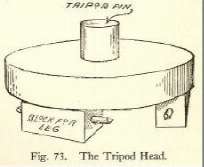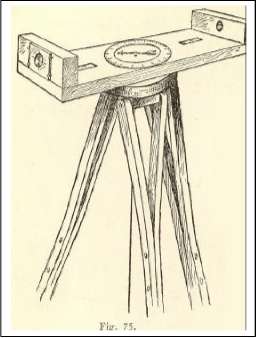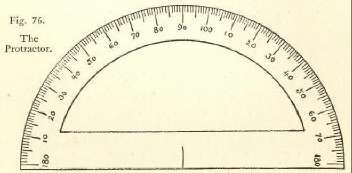The Tripod
Description
This section is from the book "The Scientific American Boy", by A. Russell Bond. Also available from Amazon: The Scientific American Boy.
The Tripod
The tripod head was formed of a wooden disk 5 inches in diameter, with a wooden pin projecting from its center adapted to engage the hole in the circular piece above referred to. To the bottom of the tripod head were nailed three blocks 2 inches long and 1 inch square in cross-section. The tripod legs were made of light strips of wood, 3/8 inch by 1 inch by 5 feet long, which we secured from one of the mills at Lumberville. Each leg was formed of two of these strips, nailed securely together to within 20 inches of the top. At the upper ends the strips were spread to receive the blocks on the tripod head. In this position they were held by headless wire nails driven into the ends of the blocks and fitting into holes drilled in the strips. For a plumb line we tacked a cord to the center of the tripod head, and attached a good-sized sinker to its lower end. In connection with this plumb line we occasionally used a protractor consisting of a semicircle of cardboard 5 inches in diameter, on which the degrees of the circle were marked off with radiating lines, as illustrated in Fig. 76. By holding the straight edge of this protractor against the base of the tripod, and noting the number of degrees between the 90 degree mark and the plumb line, we could tell at a glance at what angle from the horizontal the instrument was tipped.

Fig. 73. The Tripod Head.
Fig. 74. The Tripod Leg.

Fig. 75. The Surveying Instrument Complete.

Fig. 76. The protractor.
Continue to:


